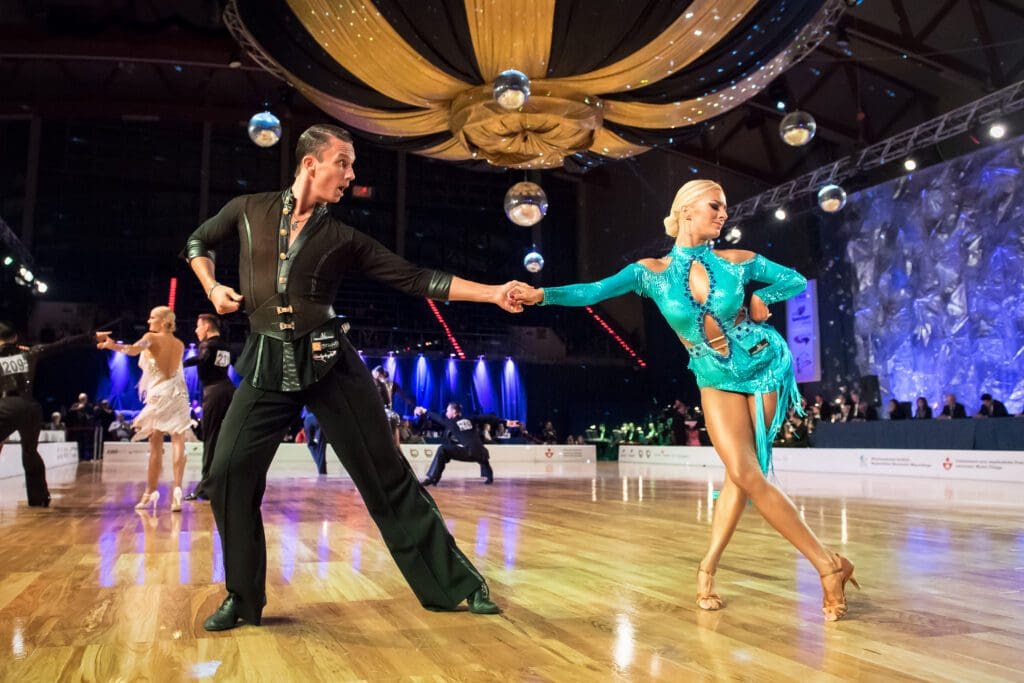Jive
Jive History
Jive, a lively and energetic dance style, has a colorful history that spans several decades and cultures:
Origins in African-American Communities:
- Jive originated among the African-American community in the early 20th century. It evolved from various African-American dance styles, including the Jitterbug.
Spread and Popularity:
- In the 1930s and 1940s, Jive gained popularity in the United States, largely due to the influence of swing music.
- American soldiers introduced Jive to Europe during World War II, where it quickly gained popularity.
Development and Variations:
- Jive was influenced by other dance styles, including the Lindy Hop and East Coast Swing.
- Over time, Jive developed distinct regional styles, with variations in technique and appearance.
Ballroom Adaptation:
- In the mid-20th century, Jive was adapted into a competitive ballroom dance, known as Ballroom Jive.
- This version was standardized with specific steps and tempos, differing from its more improvisational original form.
Modern Presence:
- Today, Jive is one of the five International Latin dances in ballroom competitions.
- It remains a popular social dance, known for its high energy, bouncy rhythm, and playful movements.
In summary, Jive, with its roots in African-American dance culture, evolved through the swing era to become a dynamic and joyful dance form, enjoyed both in competitive dance and social settings.
Jive Characteristics
- Jive is a vibrant, lively dance characterized by its upbeat tempo, bouncy rhythm, and energetic footwork. It features a variety of kicks, flicks, and twist turns, often with a playful and theatrical flair. Jive dancers typically exhibit a lively, carefree attitude, making it a fun and exuberant dance to both watch and perform.
Jive Music Information
Jive music, essential for the lively and energetic dance, has several defining characteristics:
Rhythm and Tempo: Jive music is known for its fast tempo and bouncy rhythm, typically ranging from 160 to 176 beats per minute (bpm). This upbeat pace sets the foundation for the dance’s energetic and lively nature.
Time Signature: The music usually has a 4/4 time signature, with a strong emphasis on the first and third beats, which dancers often accentuate in their movements.
Musical Style: Jive music has its roots in swing and rock ‘n’ roll. It features a cheerful, lively sound, often with a prominent brass section and rhythmic guitar patterns.
Mood: The overall mood of Jive music is upbeat, playful, and sometimes cheeky, complementing the dance’s spirited and dynamic character.
Instrumentation: Classic Jive music often includes instruments like saxophones, trumpets, piano, and drums, creating a vibrant and energetic sound.
These musical elements combine to create the perfect backdrop for Jive dancing, encouraging high energy, quick movements, and an overall sense of fun and enthusiasm.
